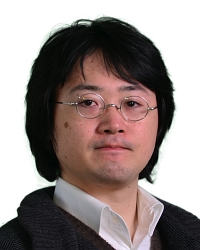TR2024-015
Graph-Based EEG Signal Compression for Human-Machine Interaction
-
- , "Graph-Based EEG Signal Compression for Human-Machine Interaction", IEEE Access, DOI: 10.1109/ACCESS.2023.3347592, Vol. 12, No. IEEE, pp. 1163-1171, March 2024.BibTeX TR2024-015 PDF
- @article{Fujihashi2024mar,
- author = {Fujihashi, Takuya and Koike-Akino, Toshiaki},
- title = {{Graph-Based EEG Signal Compression for Human-Machine Interaction}},
- journal = {IEEE Access},
- year = 2024,
- volume = 12,
- number = {IEEE},
- pages = {1163--1171},
- month = mar,
- doi = {10.1109/ACCESS.2023.3347592},
- issn = {2169-3536},
- url = {https://www.merl.com/publications/TR2024-015}
- }
- , "Graph-Based EEG Signal Compression for Human-Machine Interaction", IEEE Access, DOI: 10.1109/ACCESS.2023.3347592, Vol. 12, No. IEEE, pp. 1163-1171, March 2024.
-
MERL Contact:
-
Research Areas:
Abstract:
Communication of bioelectric signals, such as electroencephalography (EEG) signals, will be a key technology for smooth interaction between users and remote robots. The existing solutions use an orthogonal transform for EEG signal compression, such as Discrete Wavelet Transform (DWT) or Discrete Cosine Transform (DCT). This paper proposes a graph-based compression scheme for EEG signals to improve the quality at the given rate. The proposed scheme constructs a graph from the positions of the EEG sensors and adopts parameterized graph shift operators to obtain the graph basis functions for decorrelating the EEG signals. Graph Fourier Transform (GFT) based on the graph basis functions with the combination of quantization and entropy coding can send high quality EEG signals with fewer bits. Evaluations using the EEG signal dataset show that the proposed GFT-based compression can send better quality EEG signals than the existing DCT-based and DWT-based schemes at the same bit rates. In addition, an optimal parameter of the graph shift operator under the given rate is discussed to maximize the reconstruction quality of the graph-based scheme.
